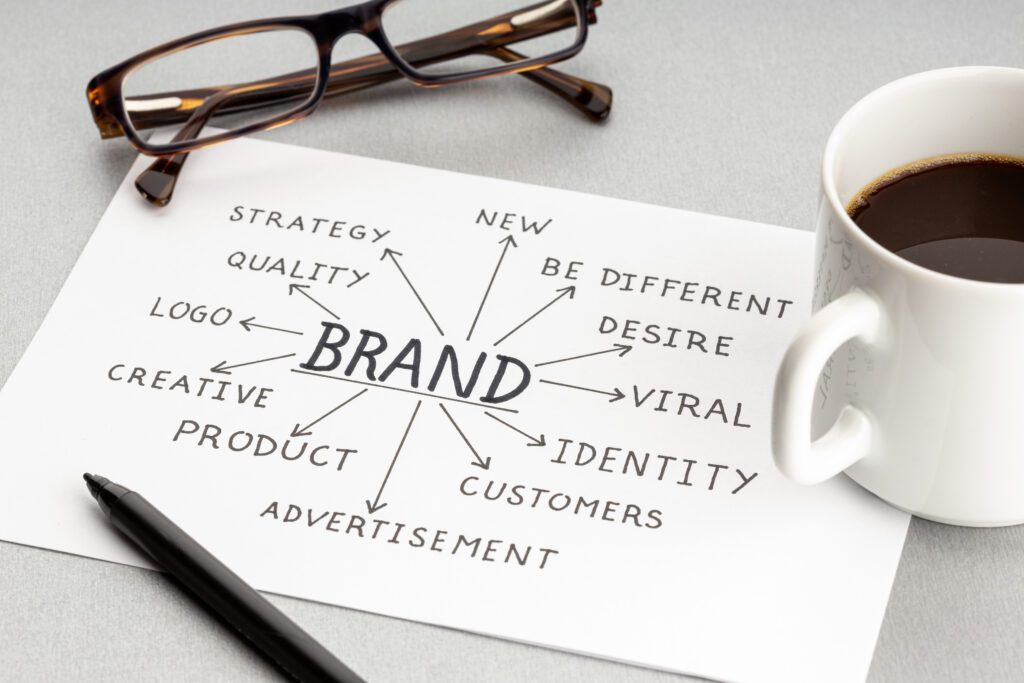When people think of branding, they often reduce it to a logo or a catchy tagline. But true branding goes far deeper. It’s the full expression of your business’s identity—how it speaks, how it looks, what it stands for, and how it makes people feel. In a competitive market where attention is scarce and trust is everything, your brand is your most valuable business asset.
1. Branding Makes You Memorable
In an age of constant exposure, consumers are bombarded with choices. Strong branding cuts through the noise. A recognizable name, clear messaging, distinct typography, and a cohesive visual language (including color) act as cognitive shortcuts—helping people identify and remember you quickly.
But being remembered isn’t just about looks. A memorable brand also evokes a specific emotional experience. For example, Apple isn’t just sleek design—it’s innovation and simplicity. Patagonia isn’t just outdoor gear—it’s environmental stewardship. When your brand clearly communicates what you stand for, customers are more likely to keep you in mind and come back when they’re ready to buy.
2. Branding Builds Emotional Loyalty
Customers don’t just buy products—they buy stories, values, and experiences. A well-crafted brand resonates on a deeper emotional level, forming connections that go beyond transactional interactions.
This emotional loyalty drives repeat business and turns buyers into advocates. Brand loyalty isn’t just about satisfaction—it’s about alignment. Think of brands like Nike or Tesla: they’ve created movements, not just markets. If your brand consistently delivers on its promise, customers will not only stick with you—they’ll spread your message for you.
3. You Become the Go-To Name in Your Industry
Visibility is one thing. Familiarity is another. Strong branding creates mental availability—when someone needs what you offer, your name rises to the top. This is the result of consistent and strategic exposure across marketing channels, combined with a clear and consistent identity.
It’s not about shouting louder. It’s about becoming more recognizable and relevant. From billboards and packaging to Instagram ads and influencer partnerships, every brand touchpoint should reinforce your core message and positioning.
4. Your Image Dictates Perceived Value
Perception is everything. Consumers are often willing to pay a premium for a brand they perceive as reputable, high-quality, or exclusive—even when alternatives offer similar functionality.
Luxury brands like Rolex, Hermès, or even Apple justify premium pricing largely through brand perception. A professional, polished brand signals competence, quality, and attention to detail. In contrast, an inconsistent or amateur brand presence may erode trust—regardless of how good the actual product or service is.
5. Trust and Credibility Are Brand-Driven
Trust is a key currency in modern commerce. In saturated markets, consumers gravitate toward brands that feel stable, honest, and reliable. Branding creates familiarity, and familiarity breeds trust.
Professional visuals, clear communication, social proof, and a consistent brand voice all contribute to your credibility. Reviews, testimonials, and media mentions reinforce this trust—but only if the brand foundation is solid.
When customers believe in your brand, they’ll be more patient during issues, more forgiving of mistakes, and more likely to stick with you through growth.
6. Branding Creates Deeper Emotional Resonance
Great branding is storytelling at scale. It turns your business into something customers can connect with—something they care about. Whether it’s nostalgia, aspiration, belonging, or joy, the best brands feel human.
This is where color psychology, design, language, and tone come together. For example:
- A wellness brand might use soft pastels and clean sans-serif fonts to evoke calm and health.
- A tech startup might pair deep blues (trust) with energetic oranges (innovation) to signal dependability with bold vision.
- A sustainable fashion line might combine earthy greens and neutrals with minimalist design to communicate eco-conscious values.
Branding isn’t just about what people see. It’s about how your brand makes them feel—and why they choose you over someone else.
7. Marketing Becomes More Efficient and Effective
Your brand is the blueprint for every marketing campaign. Without a defined brand identity, your messaging risks feeling disjointed or forgettable. With branding in place, your efforts compound—every post, email, and ad reinforces your story.
A strong brand ensures message consistency across all platforms: from packaging and social media to sales funnels and customer service scripts. That consistency builds recognition, trust, and conversion over time.
8. Attract Top Talent and Strategic Partnerships
People want to work with companies that align with their values and inspire pride. A well-defined brand doesn’t just attract customers—it attracts top-tier talent and potential collaborators.
Think of your brand as a magnet. If it’s compelling, professionals will seek to join your mission. Strategic partners and investors will be more inclined to engage. A clear vision, sharp design, and focused messaging make your brand a vehicle for growth—not just sales.
Conclusion: Branding Is an Investment, Not an Expense
Your brand is your business’s reputation, personality, and promise rolled into one. It shapes public perception, influences decision-making, and drives long-term growth. Without it, marketing is harder, sales are weaker, and customer retention is limited.
If you haven’t already, define your brand’s:
- Core values: What do you stand for?
- Visual identity: What colors, fonts, and imagery tell your story?
- Voice and tone: How do you speak to your audience?
- Promise: What can customers expect every time?
By investing in your brand with intention and clarity, you create a business that not only sells—but endures, connects, and inspires.

